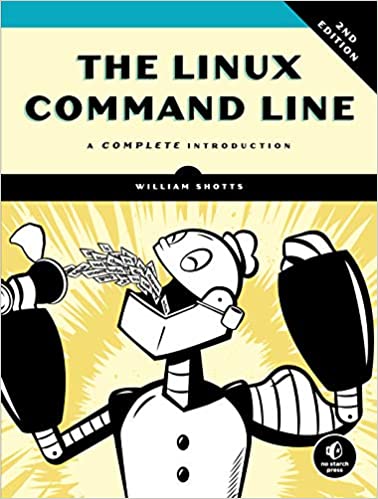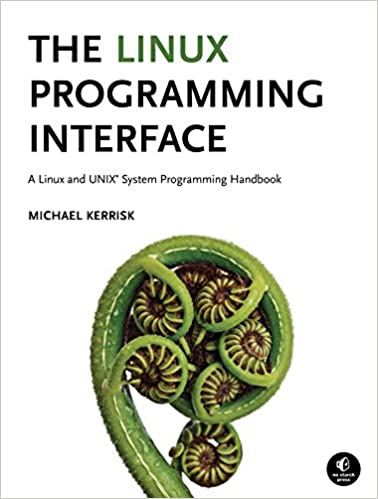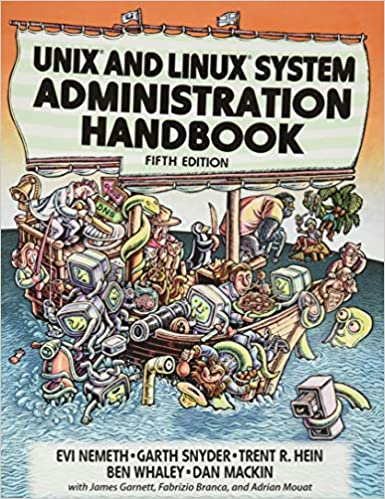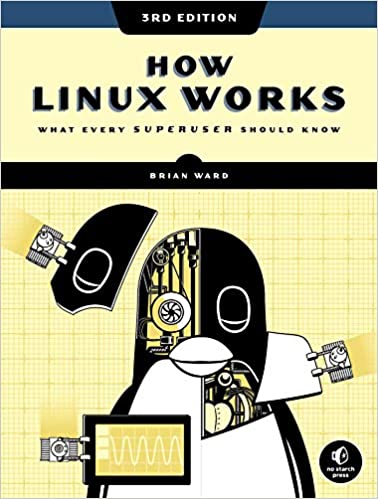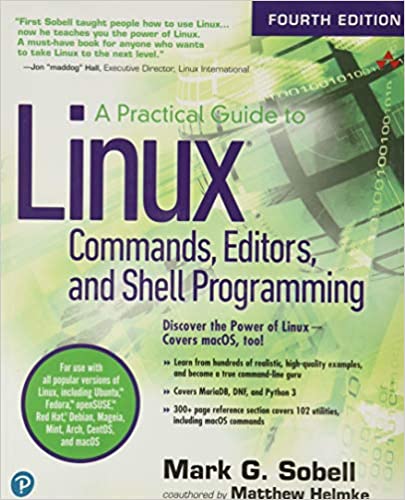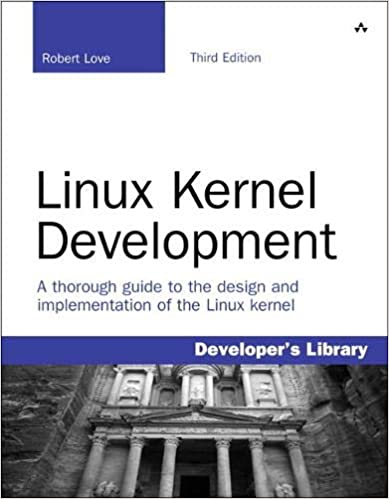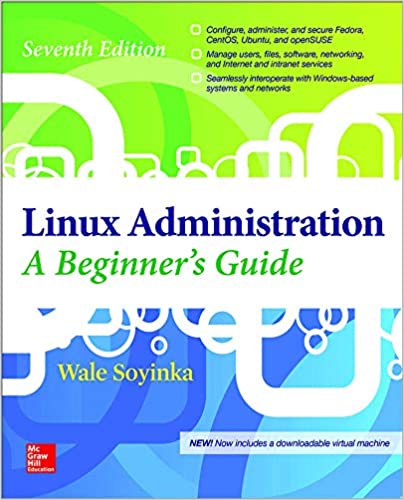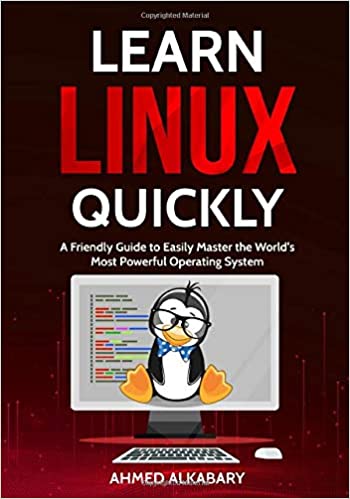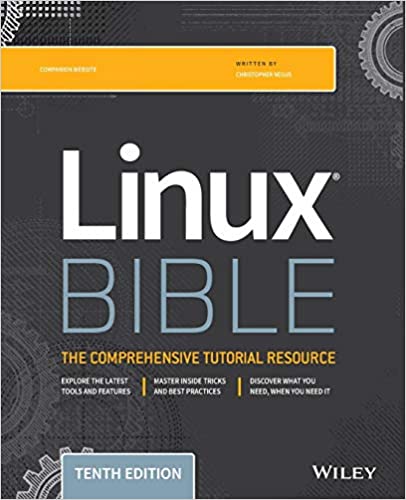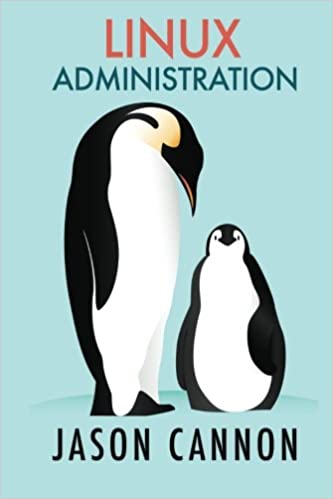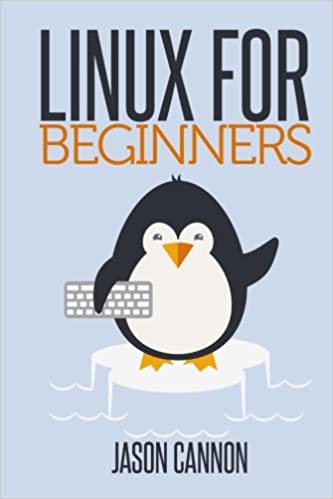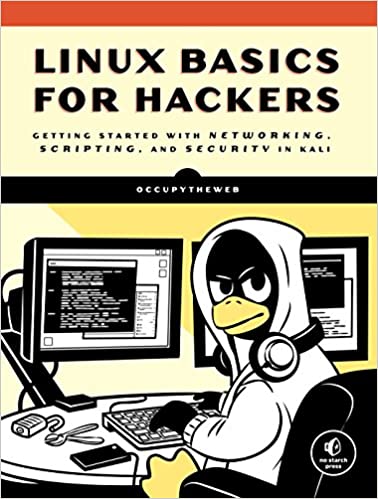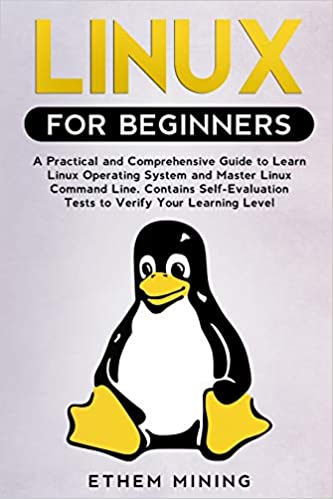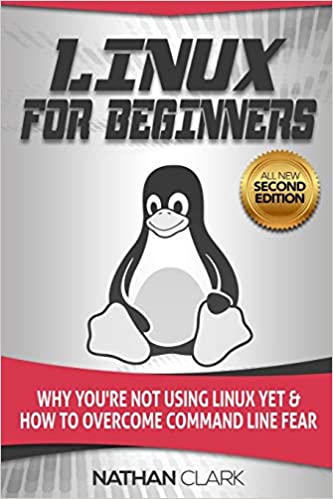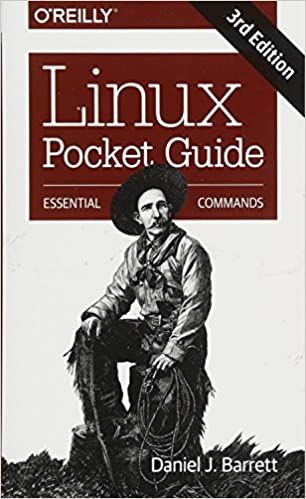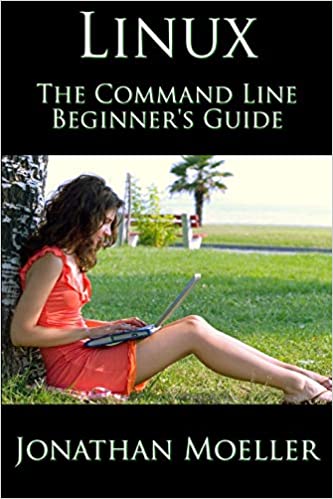Table of Contents
Today we’re showing you the best Linux books for beginners and beyond.
Did you know that the International Space Station runs on Debian 6, a Linux distribution? 🚀
But there are a lot of places closer to home that use it too: Google, Amazon, etc.
And while just under 2% of computers use Linux, we are strong.
…And we are growing!
So there is no better time to start learning Linux.
And if you are already familiar, it doesn’t hurt to have a few reference manuals around.
This post contains affiliate links. I may receive compensation if you buy something. Read my disclosure for more details.
TLDR: Best Linux Books This Year
We picked the absolute best Linux books based on the following criteria:
🔥 Best Overall 🔥
The Linux Command Line
💥 Best for Newbies 💥
Learn Linux Quickly
💸 Best Value 💸
Linux Bible
Best Linux Books
1. The Linux Command Line, 2nd Edition
No Starch Press has yet to publish a bad book.
With The Linux Command Line by William Shotts, you’ll start as an absolute beginner. By the end, you’ll be able to write complete programs in Bash.
But first, you’ll learn about:
- file navigation
- command chaining
- pattern matching with regular expressions
And much more.
🎤 Check out our exclusive interview with Wiliiam Shotts, the author of this book!
Perhaps one of the more fun aspects is learning how to administer your system. This includes package installation, networking and process management.
You’ll also learn how to write shell scripts to automate repetitive tasks.
For The Linux Command Line, you’ll learn how to edit files with the text editor Vi.
📚 How we really feel:
The Linux Command Line is arguably one of the best Linux books for beginners.
It’s thick, jam-packed with information, and explains everything with a step-by-step process.
If you get one Linux book on this list, make it this one.
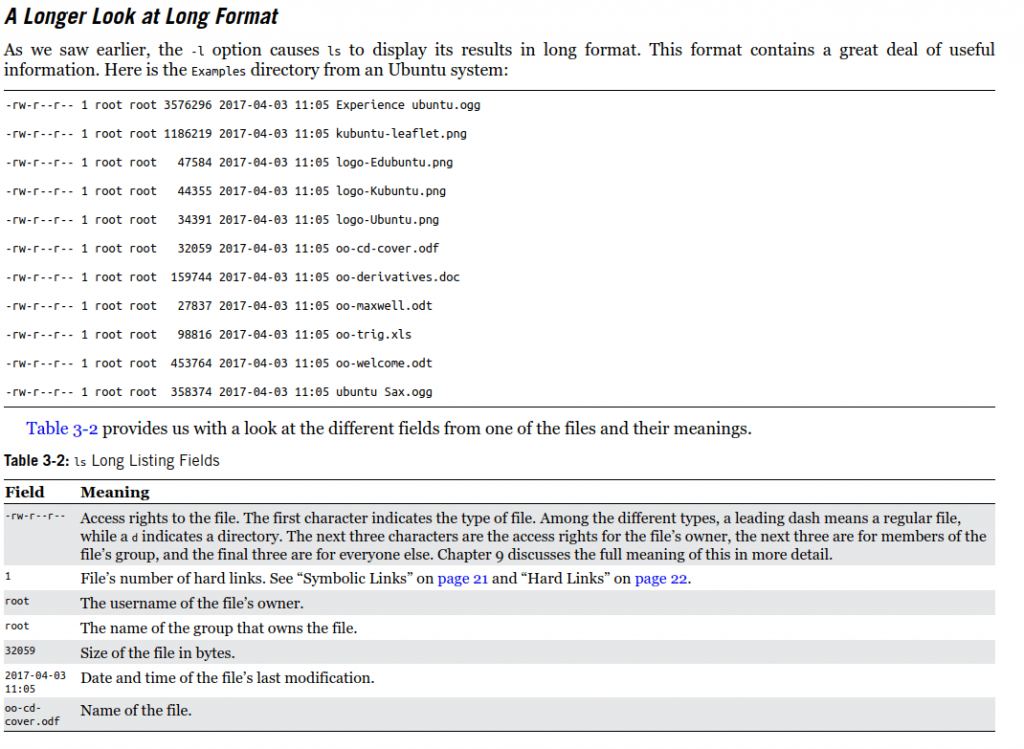
Want to take command of the Bash shell? Sign up for the course Master the Bash Shell on Educative.io.
2. The Linux Programming Interface
The Linux Programming Interface by Michael Kerrisk was published in 2010, but is still one of the most relevant Linux books to date. Ask around and you’ll see Linux enthusiasts reference this book regularly.
Here is where you’ll learn about system calls and library functions necessary for system programming. In fact, you’ll find over 500 of them.
In addition, you’ll find over 200 example programs. You’ll also find 115 diagrams and 88 tables to illustrate concepts.
With The Linux Programming Interface, you’ll learn how to:
- write files efficiently
- create processes
- execute programs
- build shared libraries
- write network applications
And much more.
While there’s a heavy focus on Linux, The Linux Programming Interface also emphasizes UNIX.
Want to learn more about the command line? Check out the course Learn the Command Line on Codecademy Pro.
3. UNIX and Linux System Administration Handbook
UNIX and Linux System Administration Handbook by Evi Nemeth, Garth Snyder, et al. has dropped a lot of its UNIX material in the 5th edition. But it’s increased its coverage of Linux.
With its casual writing style, you’ll learn how to configure and maintain UNIX and Linux systems. This includes systems providing cloud infrastructure.
You’ll also learn best practices for system administration such as:
- networking design
- storage management
- web hosting
- automation
And beyond.
You’ll also examine configuration management, security and performance analysis.
UNIX and Linux System Administration Handbook also covers:
- cloud deployments
- continuous delivery
- containers like Docker
And beyond.
Engaging and practical, with just enough humor to not be annoying. It really is the gold standard, you will learn and understand Linux so much better after reading.
– Michael Jackson, Customer
4. How Linux Works, 3rd Edition: What Every Superuser Should Know
With over 50,000 copies sold, How Linux Works by Brian Ward is one of the best-selling guides for understanding the inner workings of Linux.
Because Linux gives you complete control of your computer, you need to understand how everything functions behind the scenes. So this includes things like how the system boots and what the kernel does.
How Linux Works addresses these issues plus things like:
- Logical Volume Manager (LVM)
- containers
- virtualization
And more.
With extensive coverage, you’ll also learn about how:
- Linux boots
- the kernel manages devices
- firewalls and servers work
- to write shell scripts
And beyond.
How Linux Works teaches using plenty of real-world examples and relatable explanations.
5. A Practical Guide to Linux Commands, Editors, and Shell Programming
Whether you’re a beginner or a professional, A Practical Guide to Linux by Mark G. Sobell and Matthew Helmke has something for every Linux user regardless of distribution (Ubuntu, Fedora, Red Hat, etc.).
First you’ll learn all about the Linux operating system. Then, you’ll learn about various editors like VIM and EMACS.
After that, you’ll learn about different shells like Bash and TCSH. Then you’ll move onto programming tools.
Finally, you’ll learn about secure network utilities. There’s also a handy command reference.
This edition of A Practical Guide to Linux also covers:
- Dandified YUM (DNF)
- zsh
- Maria DB
- Python 3
And much more.
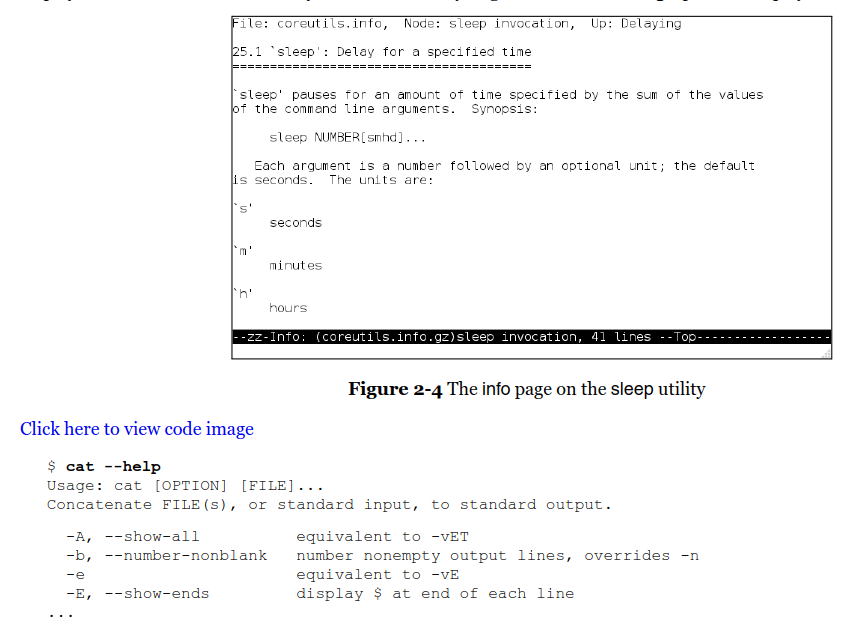
Want to test your knowledge of the command line? Work on the guided project Command Line in Linux on Coursera.
6. Linux Kernel Development
Linux Kernel Development is by Robert Love, a kernel developer. It was written to help programmers understand the Linux operating machine better and to help developers write better code.
You’ll learn about subsystems of the Linux kernel such as interfaces, design and implementation.
In addition, you’ll learn about:
- process management
- the system call interface
- memory addressing
- the page cache
- kernel synchronization
And much, much more.
In this updated third edition, you’ll learn about kernel data structures. Plus you’ll get valuable tips on debugging the Linux kernel.
Then after learning about kernel synchronization, you’ll gain insight into submitting kernel patches. Finally, you’ll get tips for working within the Linux kernel community.
Like an expert whispering the answers to me at the instant I need them.
– G. Lyle Snodgrass, Customer
7. Linux Administration: A Beginner’s Guide
Linux Administration: A Beginner’s Guide by Wale Soyinka teaches readers how to set up any version of Linux on individual servers or entire networks.
Using real-world examples and step-by-step instructions, you’ll learn how to configure hardware and software. In addition, you’ll learn how to work within the graphical user interface (GUI) or command line.
Linux Administration: A Beginner’s Guide also teaches readers how to install and configure Linux. From there, you’ll learn how to:
- manage source code
- customize the Linux kernel
- work with physical and virtual file systems
- build firewalls and routers
And much more. You’ll also learn how to implement cloud-based technologies using containers.
8. Learn Linux Quickly
Learn Linux Quickly by Ahmed Alkabary is ideal for readers with no prior Linux experience. And instead of dry language and complicated explanations, you’ll learn Linux in a motivational, fun environment.
You’ll start from the very beginning: installing Linux. Then you’ll learn over 115 Linux commands.
From there, you’ll learn about:
- user and group management
- Linux networking fundamentals
- Bash scripting
- Linux processes
- understanding file permissions
And beyond.
Learn Linux Quickly only teaches beginners the foundations of Linux. So if you want to go beyond the basics, you may want to pick up one of the more challenging books in our list.
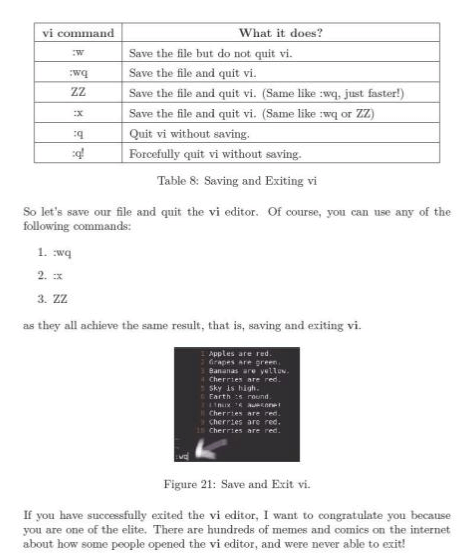
9. Linux Bible
Linux Bible by Christopher Negus is a guide accessible both to beginners and seasoned Linux users. This updated 10th edition covers Fedora 30 and Ubuntu 18.04 LTS, but it mostly focuses on RHEL 8.
Starting from the beginning, you’ll learn how to get Linux up and running. From there, you’ll work on basic operations and some advanced tasks.
You’ll also learn how to use Openstack and Cloudforms to bring Linux to the cloud. In addition, you’ll learn how to navigate Linux with AWS, GCE and Azure.
Finally, with Linux Bible, you’ll learn how to use Ansible to automate Linux deployment.
Solutions to the age old Linux question “WTF?” are found here.
– Paul McDowell, Customer
Want to learn more about the command line? Check out the course Bash for Programmers on Educative.io.
10. Linux Administration
Linux Administration by Jason Cannon takes readers on a journey from Linux user to Linux administrator. It’s also ideal for current UNIX and Windows administrators interested in transitioning to Linux.
You’ll learn about things like what the boot process is and how it works. Then you’ll learn about things like:
- disk management
- partitioning
- file system creation
And more.
From there, you’ll learn how permissions work and how to decrypt them. Plus you’ll navigate configuring Linux network interfaces.
And that’s just for starters.
Linux Administration contains a wealth of knowledge for anyone working in Ubuntu, Debian, Mint and beyond.
11. Linux for Beginners by Jason Cannon
Linux for Beginners is another book by Jason Cannon. Geared towards absolute beginners, the book moves slowly using step-by-step instructions.
New concepts are introduced in simple terms, making them easier to understand.
You’ll start by learning what a Linux distribution is and how to choose the best one for your needs. Then you’ll learn how to connect Linux to Mac and Windows.
From there, you’ll learn about the most basic and frequently used Linux commands.
Plus you’ll learn how permissions work and how to decipher more difficult ones.
Then you’ll explore things like customizing your shell prompt, compressing files and command line efficiency.
The information in Linux for Beginners applies to all Linux environments like Ubuntu, Mint, Fedora, Red Hat and beyond.
12. Linux Basics for Hackers
Linux Basics for Hackers by Occupytheweb uses the Kali Linux distribution (designed for penetration testing) to teach the basics of Linux… As hackers use it, of course.
Some topics covered include:
- command line basics
- Bash basics
- package management
- the Linux kernel
- networking
And beyond.
So you’ll learn the basics of Linux while also learning techniques to control a Linux environment.
Some hacking tips and tricks you’ll learn include how to:
- cover your tracks
- scan for network connections and open ports
- build your own hacking tools
- use proxy servers
And beyond.
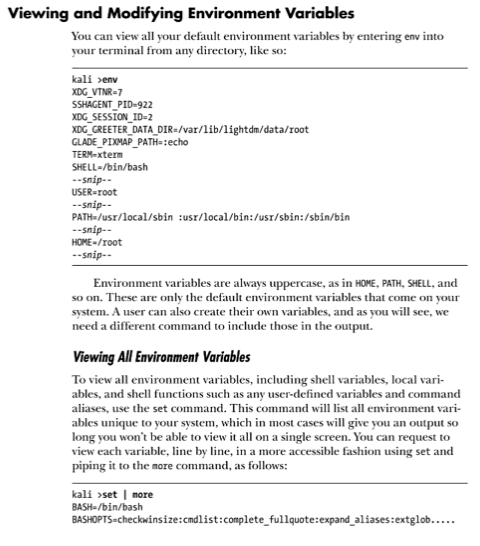
13. Linux for Beginners by Ethem Mining
Linux for Beginners by Ethem Mining is another useful reference for absolute beginners with no prior Linux experience.
So you’ll start by learning the basics like what Linux is and how it functions. Then you’ll learn how to choose a Linux distribution that works best for your needs.
From there, you’ll become familiar with text editors.
Then you’ll work with shell scripting and command line editing.
Linux for Beginners contains a quiz at the end of every chapter.
Looking for a good course for newbies? Check out Getting Started with Linux on Pluralsight.
14. Linux for Beginners by Nathan Clark
Linux for Beginners by Nathan Clark offers step-by-step, simple guidance to learning Linux. It aims to eliminate all frustrations that come with being a first-time Linux user.
With plenty of pictures, you’ll start by learning how to install Linux. Then you’ll learn how to make Linux look and function like Windows or macOS.
After that, you’ll learn how to navigate Linux when it freezes, crashes or has other errors.
You’ll also explore different Linux distributions and learn how to select the one that best suits your needs.
Linux for Beginners spends most of its time on the absolute basics to get you comfortable as a first-time Linux user.
15. Linux Pocket Guide: Essential Commands
Linux Pocket Guide by Daniel J. Barrett is ideal for programmers who use Linux daily at work. The third edition includes updated commands for:
- processing image and audio files
- running programs
- modifying the system clipboard
- manipulating PDF files
And more.
Some topics covered include:
- file creation and editing
- text manipulation and pipelines
- backups and remote storage
- network connections
- programming with shell scripts
And beyond.
This handy pocket reference is both for beginners and advanced Linux users.
16. The Linux Command Line Beginner’s Guide
In Linux The Command Line Beginner’s Guide by Jonathan Moller, you’ll learn the basics. And as the title suggests? It won’t teach you intermediate or advanced concepts.
We believe this is one of the best Linux books for absolute beginners.
You’ll learn things like copying, moving and deleting files. You’ll also learn how to:
- create, delete and manage users and files
- use the root account with su and sudo
- use virtual terminals
- create and edit text files from the command line
- use the Bash shell
And much more.
Best Linux Books This Year: Conclusion
Today we looked at the best Linux books, and came up with three that were a cut above the rest:
Best Overall
The Linux Command Line
Best for Newbies
Learn Linux Quickly
Best Value
Linux Bible
So whether you’re looking for value, overall quality or a beginner-friendly guide, we think there’s something for every Linux user.
Up Next:
- 8 ABSOLUTE BEST Linux Training Courses and Certifications (plus PROMO CODES)
- The Linux Foundation Training Review (Linux Foundation courses, training & bootcamps)
- 5 Best Flutter Courses + Bonus [Learn Flutter for Beginners]
- Why PORTFOLIO SURGERY needs to be in every software developer’s pocket
- Is Coursera worth it? (Coursera review)
What are the best Linux books this year?
There are plenty of good Linux books. However, for the best, we came up with 3. For best overall, we think The Linux Command Line is the way to go. For newbies, we think Learn Linux Quickly covers all bases. And for best value, we think Linux Bible gives you the most bang for your buck.
Is The Linux Command Line worth it?
We think The Linux Command Line is worth it. With The Linux Command Line by William Shotts, you’ll start as an absolute beginner. By the end, you’ll be able to write complete programs in Bash.
But first, you’ll learn about file navigation, command chaining, pattern matching with regular expressions and much more. Perhaps one of the more fun aspects is learning how to administer your system. This includes package installation, networking and process management. You’ll also learn how to write shell scripts to automate repetitive tasks. For The Linux Command Line, you’ll learn how to edit files with the text editor Vi. The Linux Command Line is one of the best Linux books for beginners.Is How Linux Works any good?
With over 50,000 copies sold, How Linux Works by Brian Ward is one of the best-selling guides for understanding the inner workings of Linux. Because Linux gives you complete control of your computer, you need to understand how everything functions behind the scenes. So this includes things like how the system boots and what the kernel does. How Linux Works addresses these issues plus things like Logical Volume Manager (LVM), containers, virtualization, and more. With extensive coverage, you’ll also learn about how Linux boots, the kernel manages devices, firewalls and servers work, to write shell scripts
And beyond. How Linux Works teaches using plenty of real-world examples and relatable explanations.
![16 best linux books this year [learn for beginners & beyond]](https://realtoughcandy.com/wp-content/uploads/2021/03/cover-best-linux-books-1024x576.jpg)
